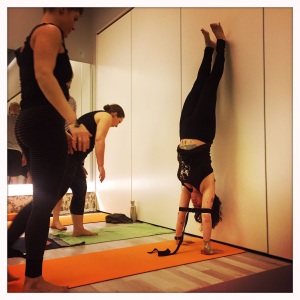I stopped taking methotrexate back in December, so I thought I’d report back on how things have been since then. First of all, I noticed the difference in my energy, mood and anxiety almost immediately after stopping. The rheumatology nurse said it would take two weeks to completely be out of my system, but I started to feel more ‘me’ before that. It was a real relief to get some energy back, and lose some of the dark moods and anxiety that had plagued me for about four months. I hadn’t really expressed to many people the severity of the anxiety that I’d been living with whilst on the methotrexate. The fearful thoughts weren’t taking over and thanks to my mindfulness training, I was able to basically live with them without believing them, but it was hard work, constantly living with a level of mental anxiety that just is not me.
Having the energy to enjoy life – especially around Christmas – meant that I was certain coming off methotrexate was the right decision, even though I did have a few painful flares around the Christmas period. And then, amazingly, I had over a month of being free of flares, fatigue and pain. Towards the end of my time taking methotrexate, I’d been overdoing the sugar, and also cheese – two food groups that I can very easily overeat. So in the New Year, I decided to massively cut down on sugar, and to totally give up dairy. At the same time, I went days without pain, flares or fatigue.
The longer I went without a flare, the more I wondered whether cutting out cheese was a factor. After the first week or so, I thought that it could just be a co-incidence. After two weeks, I was a little hopeful, though I still conceded that it could be a coincidence. After three weeks, I marvelled that this was the longest pain-free period in at least 3 1/2 years. After a month, I wondered if I’d finally cracked it – perhaps dairy is one of my PR triggers and if I just stayed off it, I’d be ‘normal’ again?
Five weeks of no pain is enough to let the hope really slide in. The hope that you’ve maybe entered remission. The hope that perhaps you can live a normal life again. The hope that you’ve found your trigger and that if you just avoided that trigger, you’d be free of flares. That wasn’t to last. Last week I had one night of pain and stiffness that reminded me that with PR, it’s never as straightforward as you’d like it to be. Then yesterday, I had night flares and woke not being able to move the fingers in my left hand, and a sharp and persistent pain in my right wrist.
The pain wasn’t as bad as the disappointment. I managed not to give in to a spiral of thoughts saying things like “you should have known it wouldn’t be as easy as that” and “serve you right for getting hopeful”, but they were there nonetheless. So I had a bit of a cry, and reminded myself that I’d had a long period without pain and that, in and of itself was still worth celebrating. And so I got up, massaged my hands and dragged myself to yoga, which I know helps both mind and body, even though I had to spend a lot of the class in child’s pose resting and feeling sad.
Today I’m pain free again. I’m still going to stay off cheese for another month or so. Just to see. And I’ve been keeping a food diary since the new year, so perhaps that might shed some more light on things in a couple of months when it’s had time to build up some decent data.
In the meantime, the most recent flare has reminded me (once again!) that hopes about a pain free future are all very well, but living a day at a time is the only way to live with PR, because you just never know what’s around the corner. And five weeks without pain, really IS still something worth celebrating. I won’t totally let go of the hope that one day that might extend to longer, but I’m not going to cling onto it either. I’ve lived with this for long enough to know that spending all my energy just putting hopes or fears into a future that may never happen just stops you from really living here and now. And here and now really is all there is.


